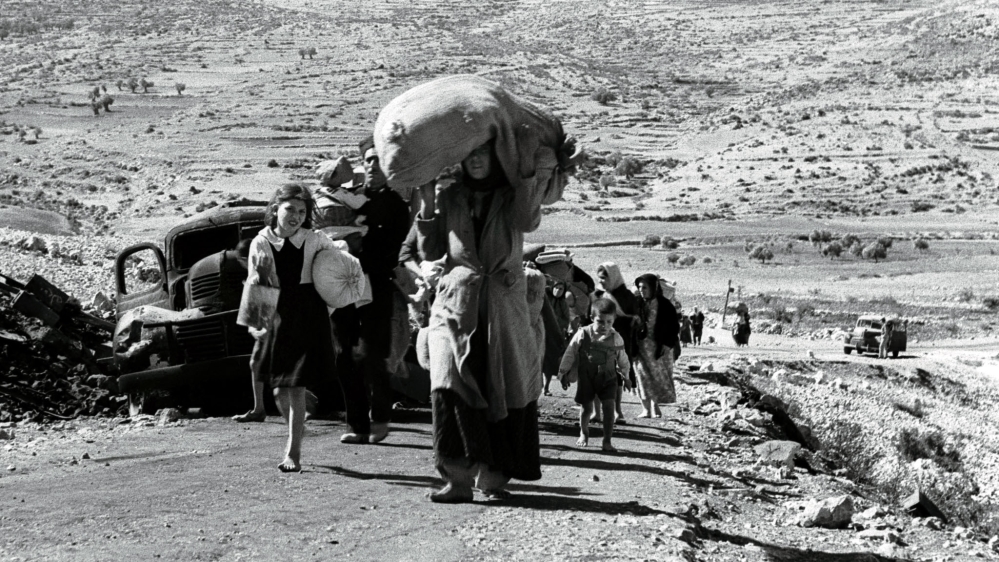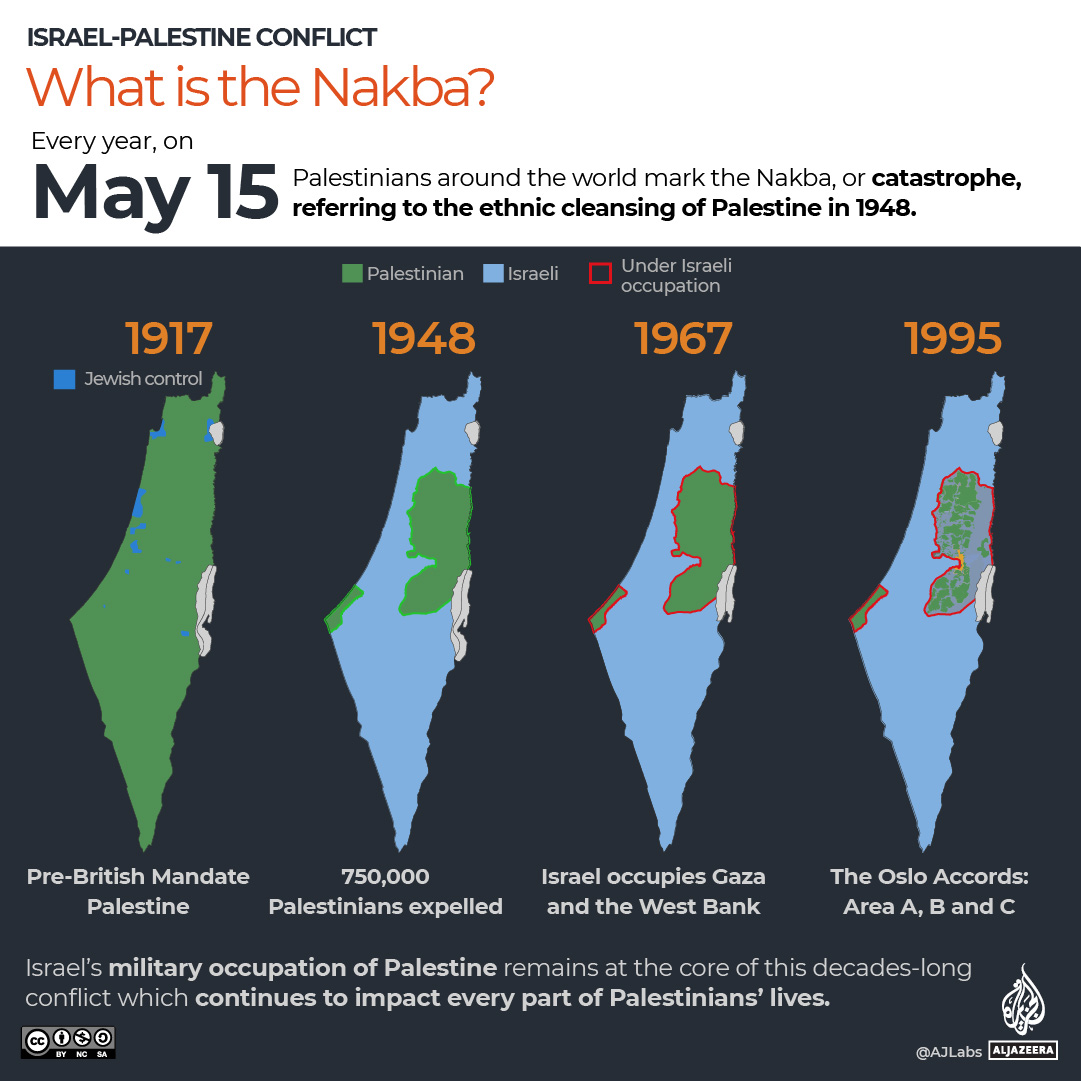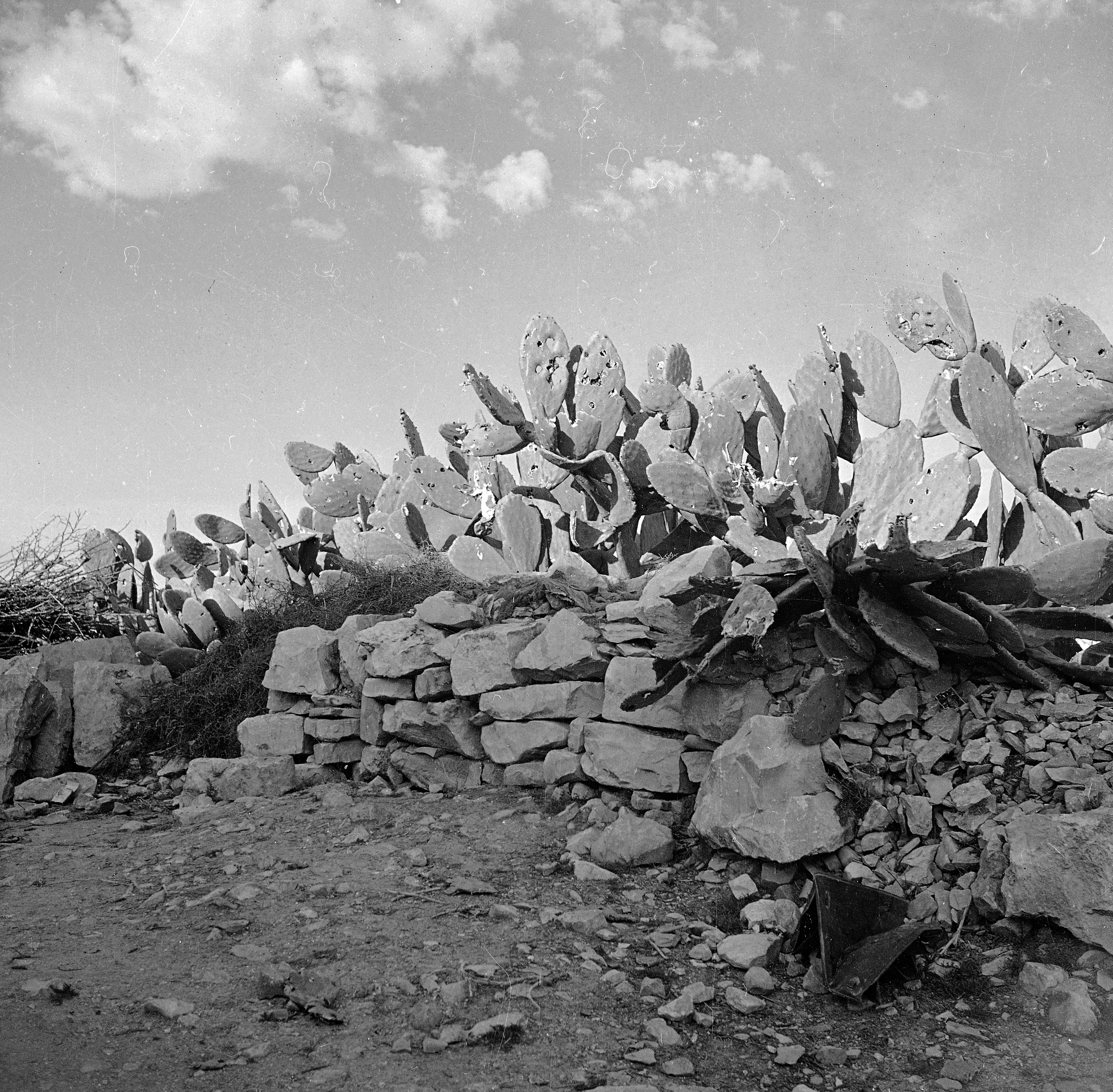
Every year on May 15, Palestinians mark a sombre occasion: the Nakba (“catastrophe” in Arabic) that befell Palestinians in the lead-up to and during 1948, when they were expelled from their historic and ancestral land by Zionist militias.
During the Nakba, a mass expulsion ensued where hundreds of villages were depopulated, homes were destroyed, and thousands were killed.
Jewish Irgun, Haganah and Stern Gang militias committed a series of mass atrocities, including dozens of massacres.
Here are five of the massacres that took place:
Balad al-Sheikh
On December 31, 1947, the first large attack by the Haganah Zionist militia took place against the village of Balad al-Sheikh, east of the port city of Haifa, in which 60 to 70 Palestinians were killed, according to Walid Khalidi’s book, All That Remains.
The raiding militia’s orders were to kill as many adult males as possible. A force of 170 men from the Palmach (an elite force of the Haganah) fired their weapons and blew up houses, then pulled out adult males and shot them. According to the Haganah General Staff, two women and five children were also killed, with an additional 40 people injured. Several dozen houses were also destroyed during the attack.
After the massacre, on January 7, 1948, many families fled the village. By late April of that year, Zionist forces had occupied it.
Before the massacre, in 1945, the village was the second-largest in historical Palestine in terms of population. It was famous for the tomb of Izz al-Din al-Qassam, a preacher whose death in action against British forces sparked a revolt against the British occupation in 1936. Today the cemetery, which lies in what was renamed the Nesher township, is in a state of neglect.

Saasaa
Two massacres were carried out by the Haganah in 1948: One in mid-February and another at the end of October. According to Khalidi’s book, on February 15, a Palmach force raided the village of Saasaa and detonated explosives inside several homes, destroying 10 houses and killing “tens”, according to Haganah estimates. The New York Times reported at the time that 11 people were killed, five of them children, with 14 houses also destroyed.
The second massacre was perpetrated on October 30, when “mass murder” took place, according to Israel Galili, the former head of the Haganah National Staff. The exact numbers of those killed are unclear, nor are there detailed accounts of the killings, according to All That Remains. The village was eventually depopulated.
Before 1948, the village was known for being at an intersection that linked many urban centres, including Safad. It was dotted with water springs, apple and olive trees, as well as grape vines. In 1949, an Israeli settlement by the same name was established on the village site.
Deir Yassin
On April 9, 1948, more than 110 Palestinian men, women and children were slaughtered in one of the most heinous crimes carried out by Zionist forces. The massacre took place in the once-prosperous village of Deir Yassin on the western outskirts of Jerusalem. The New York Times reported at the time that half of the victims were women and children.
Those who were captured were rounded up and paraded through the Old City of Jerusalem by the Zionist forces. Some were then taken to a nearby quarry and executed. Others were taken back to the village and killed.
The massacre at the village – home to an estimated 750 residents who lived in the 144 houses, according to the Institute for Palestine Studies – became one of the most horrific events to have impacted the exodus of Palestinians.
According to Zochrot, an Israeli NGO that works to support the full right of return of Palestinians who were expelled during the creation of Israel, 55 young children were orphaned as a result of the massacre.
Palestinian activist Hind al-Husseini, who was 31 at the time, found the orphans near the Church of the Holy Sepulchre in Jerusalem’s Old City. On April 25, two weeks after the massacre, Hind founded Dar Al-Tifel Al-Arabi at her family’s mansion. The organisation catered to Deir Yassin orphans, and later to orphans from all over Palestine.
Today, a psychiatric hospital stands on the remains of some village houses. What used to be the city centre is now a bus station. In 1949, the settlement Givat Shaul Bet was established on the ruins of Deir Yassin as an extension of the earlier settlement built in 1906. In the early 1980s, the usurpation of the village’s lands continued, when the Haf Nof settlement was established. Under international law, all settlements built on Palestinian lands are illegal.

Saliha
On October 30, 1948, a massacre was perpetrated by the Sheva (Seventh) brigade of the Israeli army. According to various accounts, including by the Haganah National Staff’s Israel Galili, to Israeli historian Benny Morris, troops entered the village and blew up a structure, believed to have been a house or a mosque, killing the 60 to 94 people who had taken refuge inside.
The village was completely depopulated except for what was probably the elementary school. Of what remains of Saliha’s built structures today, Walid Khalidi writes: “The only remaining landmark is a long building (which may have been a school) with many high windows.”
The site is a flat, cultivated area, with most of the surrounding land planted with apple trees by Israeli farmers. The Israeli settlements of Yir’on and Avivim are now located on the former lands of Saliha.
Khalidi describes the village as one that “once stood on a plain at the edge of a steep wadi [ravine], called Wadi Saliha” in the Upper Galilee Mountains near the border with Lebanon. Salman Abu Sitta, author of the Atlas of Palestine, estimated that the number of registered Palestinian refugees from Saliha in 2008 was more than 8,000 people.

Lydda (Lydd/Lod)
On July 9, 1948, Zionist forces launched a large-scale military operation known as Operation Dani, which aimed to occupy the cities of Lydda and Ramla. Between July 9 and 13, militias killed dozens of Palestinians, perhaps as many as 200, according to Salman Abu Sitta’s Atlas of Palestine. A city-wide massacre led to a “death march” or mass expulsion of Palestinians.
“The massacre took place in two stages: the first during the time of the city’s occupation, and the second during the operation of mass expulsion of its residents, which is considered one of the largest acts of ethnic cleansing (‘transfer operations’) carried out by the Israelis,” states the Interactive Encyclopedia of the Palestine Question.
Israeli militias expelled between 60,000 and 70,000 inhabitants of the two towns and refugees from nearby villages under direct orders from Yitzhak Rabin – who was at the time director of operations for Operation Dani – with David Ben-Gurion’s agreement. Those who sought shelter in the Lydda mosque were massacred. Between 80 and 176 people inside Dahmash Mosque were massacred with machine guns, grenades and rockets. Twenty-five were killed elsewhere.
The rest were expelled at gunpoint by Rabin in what became known as the “death march” to Ramallah. Old men, women and children fell by the wayside, dying of exhaustion, dehydration and disease.
Money and women’s jewelry were looted at leisure by Israeli soldiers. Some were killed if they resisted. There was so much looting that 1,800 trucks were said to have been loaded with stolen property.







